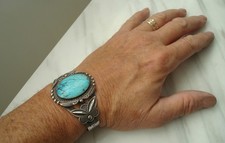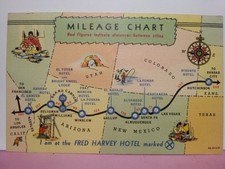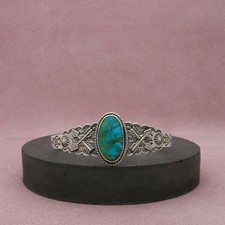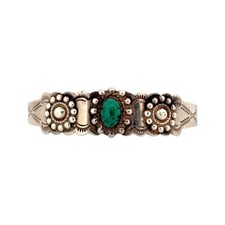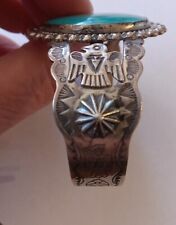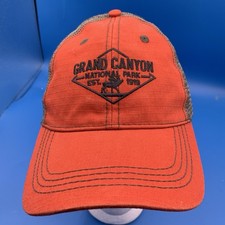Cold Chisel Harvey Era Navajo Sterling Silver Turquoise Arrow Pin Brooch
Cold Chisel Harvey Era Navajo Sterling Silver Turquoise Arrow Pin Brooch
This unique pin brooch has a stamping design referred to as “cold chisel”.
Condition: Used
Price: USD 235.00
Seller: treasuresandhistory (100.0% positive feedback, 1412 reviews)
View this Fred Harvey item on eBay
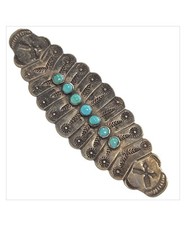
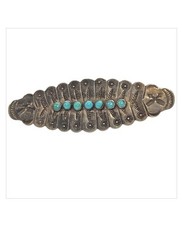
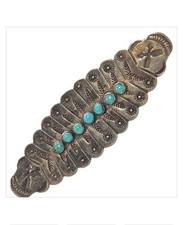
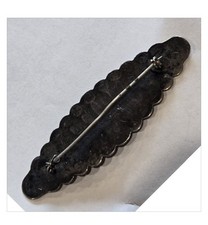
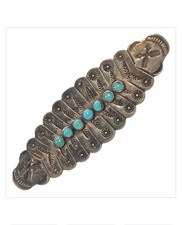
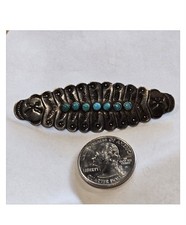
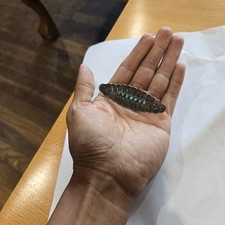
Item Description from Seller
The product is a vintage Harvey Era Navajo sterling silver turquoise arrow pin brooch, reflecting the rich heritage and craftsmanship of Native American jewelry. This piece showcases the intricate designs and vibrant colors of Native American artistry from the US, specifically during the 1935-Now era. The cold chiseled technique adds a unique touch to this brooch, making it a special collectible item for those interested in Native American culture and jewelry. This unique pin brooch has a stamping design referred to as “cold chisel”. The process entails hammering the silver with a metal chisel without the silver being pre-heated to make it softer. Stamping silver with doing this is much more difficult and requires a higher skill level Pin brooch measures 2″⅞×1″inch no marks but tested as sterling silver weight 7.4grams Fred Harvey Era Jewelry
In the early 1900’s, the Southwest, and Santa Fe specifically, became a booming tourist destination. Tourists came from across America to explore the vast landscape, learn about the different cultures out West, and purchase jewelry and tokens made by Native Americans.
Over time, artisans and traders who ran trading posts learned that tourists’ taste often differed from that of the Native artisans. Tourists preferred jewelry that was lighter and had smaller embellishments and stonework, while many Native jewelry artists preferred larger stones and heavier silver styles.
To make the jewelry more attractive to tourists, artisans began designing pieces that catered to their tastes: lighter pieces with recurring design elements and symbols such as thunderbirds, crossed arrows, arrowheads, dogs, and zig zag snakes.
At the same time, an entrepreneur named Fred Harvey (1835-1901) set out to build a hospitality enterprise across the Southwest. He began his historic endeavors by first opening Harvey House restaurants, then he developed a catering business in the Santa Fe Railway cars, followed by building Fred Harvey Hotels along the rail route. It was in these hotels and eating houses that Fred Harvey decided to develop and sell a line of lightweight, lower-cost iconic jewelry that we now know as Fred Harvey Jewelry.
Surprising to many, the Fred Harvey Company’s jewelry was often not “Indian handmade,” but produced at scale by machines and designed with iconography that was attractive to tourists. While the Fred Harvey Corporation dictated the symbols to use in their line, these trends, in turn, influenced Native American artisans to produce their own handmade jewelry using those simple, repetitive motifs. These unique pieces were made between 1900-1955, and are heavily sought after today.
Today, jewelry referred to as Fred Harvey era jewelry or railroad jewelry includes both pieces made by hand by Native artisans and machine-made jewelry. Whichever you prefer, each design represents a true piece of history of the American Southwest.
Peyote Bird Designs is pleased to share our private collection of Fred Harvey style jewelry with you. We hope you cherish these pieces, just as thousands of Americans have for the past century.
